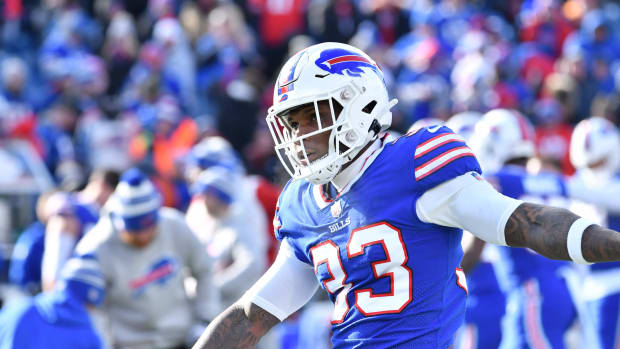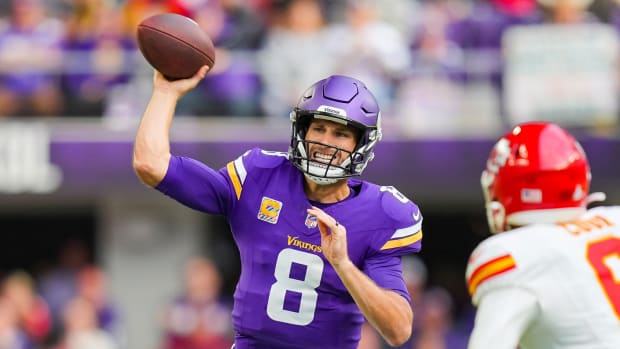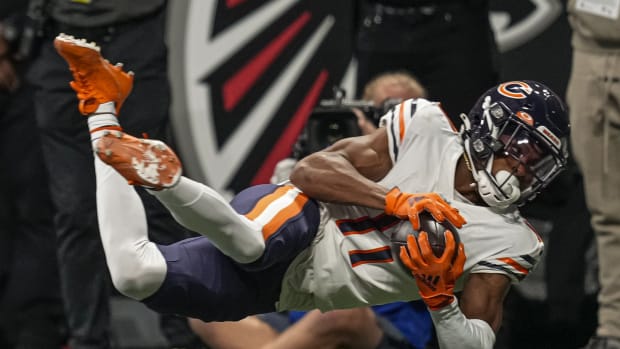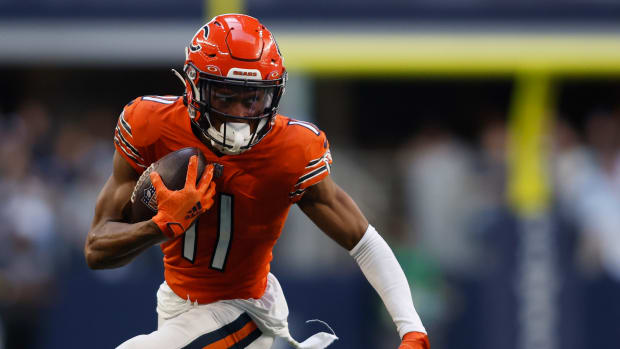Greg Olsen Talks 1-on-1 on Falcons Rebuild Strategy, 'Young Core' of Players
Maybe the Atlanta Falcons are better than advertised following the 2022 NFL Draft. That doesn't mean they should be viewed as a viable threat to contend in the NFC come this season.
Falcons general manager Terry Fontenot hit the reset button this offseason following the trade of veteran quarterback Matt Ryan. Atlanta's inability to finish above ,500, plus the lucrative contracts of Ryan and others all factored into the offseason plans of how to address several positions in free agency and the draft.
How does Atlanta improve in a timely manner? Is it as simple as adding in rotational players and hoping they hit on team-friendly contracts?
"You have to accumulate great players," retired Pro Bowl tight end Greg Olsen tells FalconReport.com in an interview sponsored by Thorne. "It doesn't matter if it's the fifth pick and you have a quarterback, take him. If it's a left tackle, you take him. A pass rusher? Take him.
"Anytime you're in a rebuild, you need to accumulate great players."
Olsen spent nine seasons as a member of the NFC South rival Carolina Panthers during his 14-year career. Some of those teams were built to win from the get-go while others took a step back in the process of looking at the bigger picture.
With Olsen as a fan favorite and top weapon for MVP quarterback Cam Newton, Carolina made the postseason four times, including representing the NFC in Super Bowl 50. The Panthers also had five seasons of sub .500 play, leading the front office to head back to the drawing board for conversations on who to draft or sign in the offseason.
Olsen pointed out the difference between landing players in free agency and landing them on draft weekend. Players that sign to join a roster usually come with a steep contract and could be viewed as only rentals. When drafting a player, a team owns their rights for multiple seasons and pay them on a rookie salary, thus allowing a franchise to spend on veteran talent at an affordable rate.
"You lock them up for four years and on some cases five years, and in relative terms, very cheap," Olsen said. "It's a great way to build the talent up on your roster, and it doesn't take up a ton of your cap space, which allows you acquire more and more players."
Atlanta re-signed several role players from last season. including do-it-all playmaker Cordarrelle Patterson, safety Erik Harris and nickel cornerback Isaiah Oliver. The Falcons also brought in veterans such as cornerback Casey Hayward, pass rusher Lorenzo Carter, linebacker Rashaan Evans and quarterback Marcus Mariota.
Several names should be viewed as foundational pieces. Patterson is a weapon regardless of where he lines up offensively. Oliver found prominent success once shifted inside. Carter and Evans have had success off the edge as a pass rusher and when playing in a two middle linebacker set.
Of course, the focus as of late will be on the incoming draft class and which prospects will find an early role in 2022. Receiver Drake London should enter the fall as the No. 2 option in the passing attack behind tight end Kyle Pitts. Pass rushers Arnold Ebiketie and DeAngelo Malone should rotate alongside Carter in hopes of fixing a pass rush that recorded a record-low 18 sacks last season.
Other rookies, such as Montana State linebacker Troy Andersen and BYU running Tyler Allgeier should see their roles expand by midseason if they can develop. Georgia offensive lineman Justin Schaffer and tight end John FitzPatrick should work in rotational roles and provide ample depth for the rebuilding franchise.
The wild card is Cincinnati quarterback Desmond Ridder, who could end up winning the starting job in training camp or take time adjusting to NFL speed. Ridder was drafted No. 74 overall and should be given a chance to prove he could be the heir to Ryan in the NFC South in time.
Olsen said that every time a team enters a rebuild, it usually cuts the expensive players or trades them for more draft capital. It's about getting younger and faster while also becoming affordable.
It was evident that Fontenot was trying to not just trying to get younger, but also more affordable this offseason. The Falcons traded Ryan to the Indianapolis Colts, freeing up $53.9 million from his current deal, but also took a $40.5 million in dead-money, the largest dead cap charge for any player all-time.
Atlanta also saved money buy cutting veteran pass rusher Dante Fowler Jr. following his second season. Entering 2022, the team has over $62 million in dead cap space as it still is partially pay for former receiver Julio Jones $15 million salary.
Next season, Atlanta can go back to spending money in free agency as it currently owns the second-most cap space in 2023 with $96.5 million available. For now it, looks to build from within, a plan Olsen has seen work in the league many times before.
"The more I can get those guys under contract, I have their rights for four or five years with the option, and I'm not looking to pay guys the big bucks," Olsen said.
"Once you feel like you've brought in that young core of young players that you feel is your future, you can now strategically because you have all this free cap space, you can now pluck a veteran here or there and back fill your roster with some experience and with some veteran to tie in all those young guys."
This interview with Greg Olsen was sponsored by Thorne HealthTech, Inc. For more information on Thorne and its products, please visit Thorne.com.










